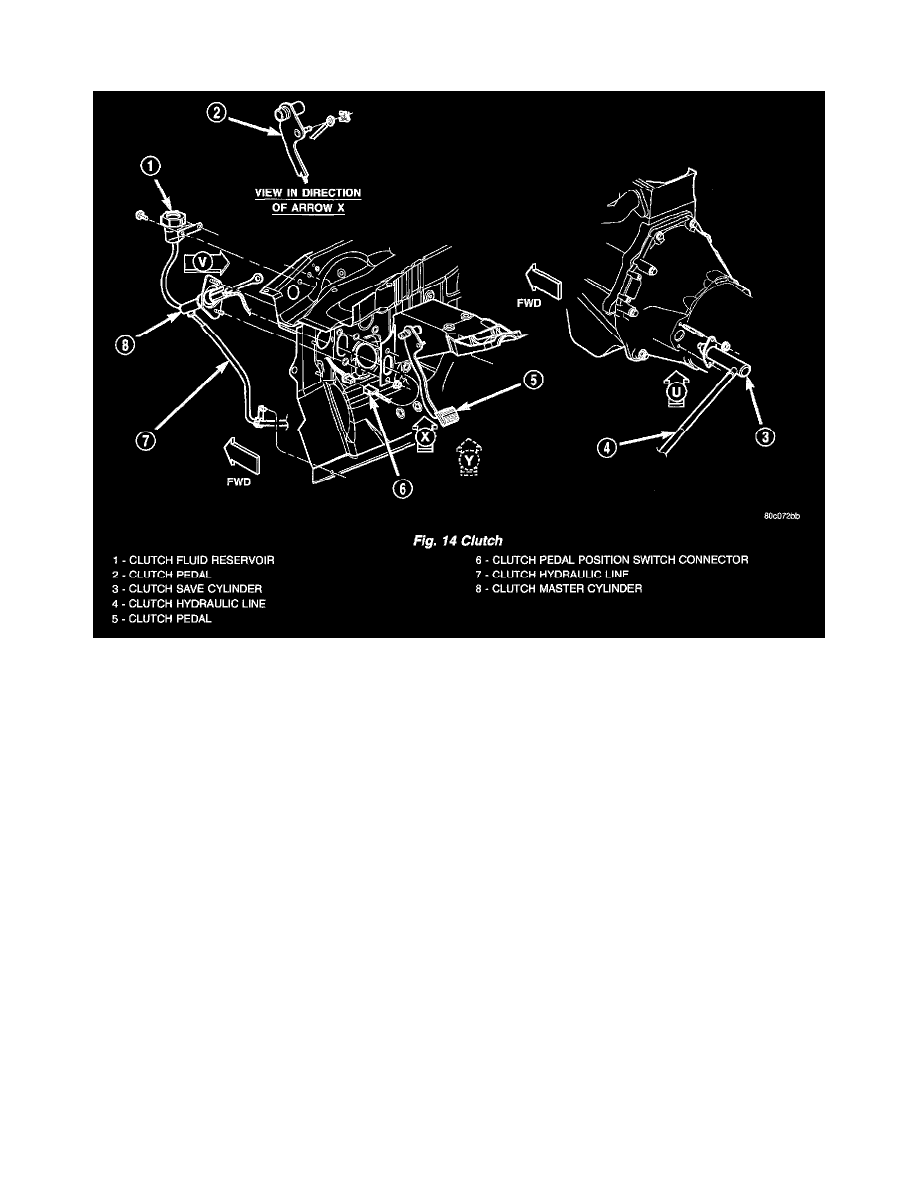Dakota Quad Cab 2WD V8-4.7L VIN N (2001)

Clutch Linkage: Description and Operation
DESCRIPTION
The hydraulic linkage consists of a clutch master cylinder, reservoir, a clutch slave cylinder and an interconnecting fluid line (Fig. 14). The clutch
master cylinder push rod is connected to the clutch pedal. The slave cylinder push rod is connected to the clutch release fork. The master cylinder is
mounted on the driver side of the dash panel adjacent to the brake master cylinder and booster assembly. The factory installed hydraulic linkage has a
quick disconnect at the slave cylinder. This fitting should not be disconnected or tampered with. The hydraulic linkage is serviced as an assembly only.
The individual components that form the linkage assembly can-not be overhauled or serviced separately.
OPERATION
The clutch linkage uses hydraulic pressure to operate the clutch. Depressing the clutch pedal develops fluid pressure in the clutch master cylinder. This
pressure is transmitted to the slave cylinder through a connecting line. In turn, the slave cylinder operates the clutch release lever. The slave cylinder
has an integral spring which preloads the release bearing against the clutch diaphragm fingers to maintain zero free-play. Slave cylinder force causes
the release lever to move the release bearing into contact with the diaphragm spring. As additional force is applied, the bearing presses the diaphragm
spring fingers inward on the fulcrums. This action moves the pressure plate rearward relieving clamp force on the disc. "Chrysler does not provide a
procedure to bleed the clutch hydraulic system".
